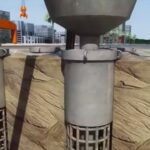Exploring the Benefits and Challenges of Modular Construction
Modular construction, also known as prefabricated or off-site construction, entails the fabrication of building components in a factory or off-site location, followed by their transport and assembly on the construction site. This construction method has several advantages, but it also presents its own challenges.
Advantages of Modular Building:
Speed and efficiency:The ability to expedite the construction process is one of the most important advantages of modular construction. Since building components are manufactured off-site concurrently with foundation work on-site, construction schedules can be drastically shortened. This pace can result in cost savings and an earlier building occupancy.
Quality Control: Modular construction occurs in a controlled factory environment, allowing for stringent quality control procedures. Standardized manufacturing processes and procedures ensure that all modules are of uniform quality. Additionally, the factory configuration reduces the possibility of weather-related damage and provides enhanced security against theft and vandalism.
Cost savings:Modular construction can result in cost savings in multiple ways. The streamlined manufacturing process, economies of scale, and decreased material waste in the factory environment can lead to lower construction costs overall. In addition, quicker construction schedules can result in savings on financing, labour, and on-site management.
Sustainability:Multiple methods exist in which modular construction promotes sustainability. The factory’s-controlled environment permits the efficient use of materials, thereby reducing surplus production. Moreover, modular construction frequently facilitates the deconstruction and relocation of buildings, thereby reducing environmental impact and promoting circular economy principles.
Flexibility & Design options:Modular construction provides design and customization options that are adaptable. The modules can be configured and combined with ease to produce a variety of building configurations and architectural styles. This adaptability permits the accommodation of diverse project requirements, including those for residential structures, commercial structures, and even complex infrastructure projects.
Difficulties in Modular Construction:
Design and Engineering Complexity: Modular construction requires architects, engineers, and manufacturers to coordinate carefully to ensure the structural integrity and functionality of the building. To accommodate transportation, assembly, and on-site connections, the design and engineering process may entail additional complexities compared to conventional construction techniques.
Transportation & Site access:Transporting finished modules to the construction site can present logistical difficulties. The size and weight of the modules must conform with local infrastructure and transportation regulations. Access to the site and the availability of cranes or other lifting apparatus are essential planning considerations.
Limited customization:While modular construction offers greater design flexibility than conventional construction, there may be restrictions on customization. Frequently, modular components are constructed in standard proportions, which can limit architectural details and design variations. Nevertheless, innovations in modular construction techniques are continuously expanding customization options.
On-Site Assembly and Integration: Skilled labour and precise coordination are required for on-site assembly and integration of modular components. The on-site construction process, including connections, utility integration, and finishing work, must be meticulously managed to ensure seamless integration between modules and compliance with local building codes.
Perception and Industry Familiarity: Some regions are still acquiring acceptance for modular construction. Some stakeholders, such as clients, architects, and contractors, may be unfamiliar with the modular construction process, resulting in scepticism or opposition. Overcoming these misconceptions and raising awareness of the advantages and capabilities of modular construction is a continuing challenge.
Despite the obstacles, modular construction has grown in popularity and been effective in numerous global projects. Modular construction is likely to continue evolving as a viable and efficient building method in the future due to technological advancements, improved industry standards, and increased adoption.
Disclaimer: This content is provided solely for your review. Erusu Consultants takes no liability for this article. The reader is advised to form their own opinion. Please consult a Structural Engineer before making any final decisions.






